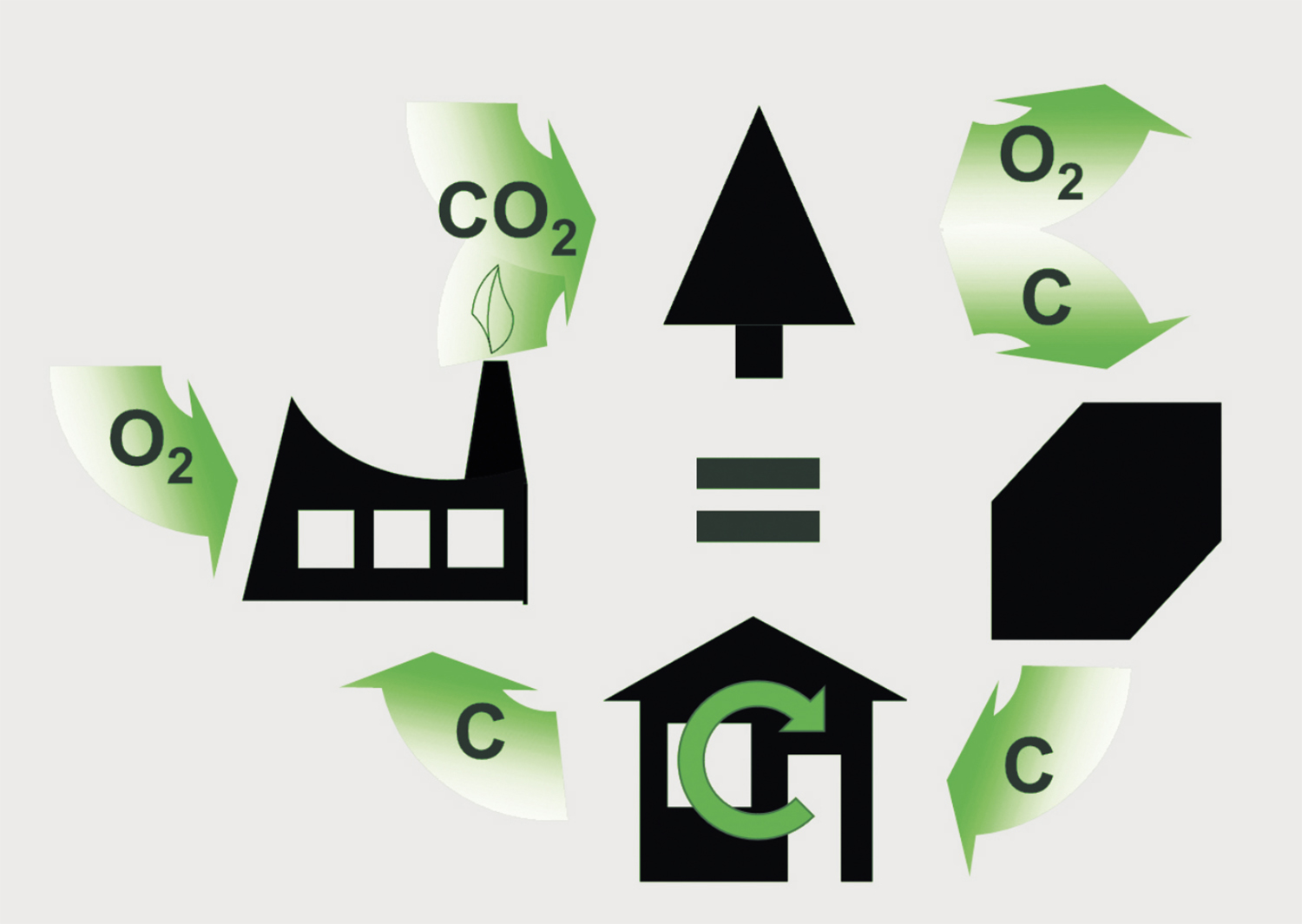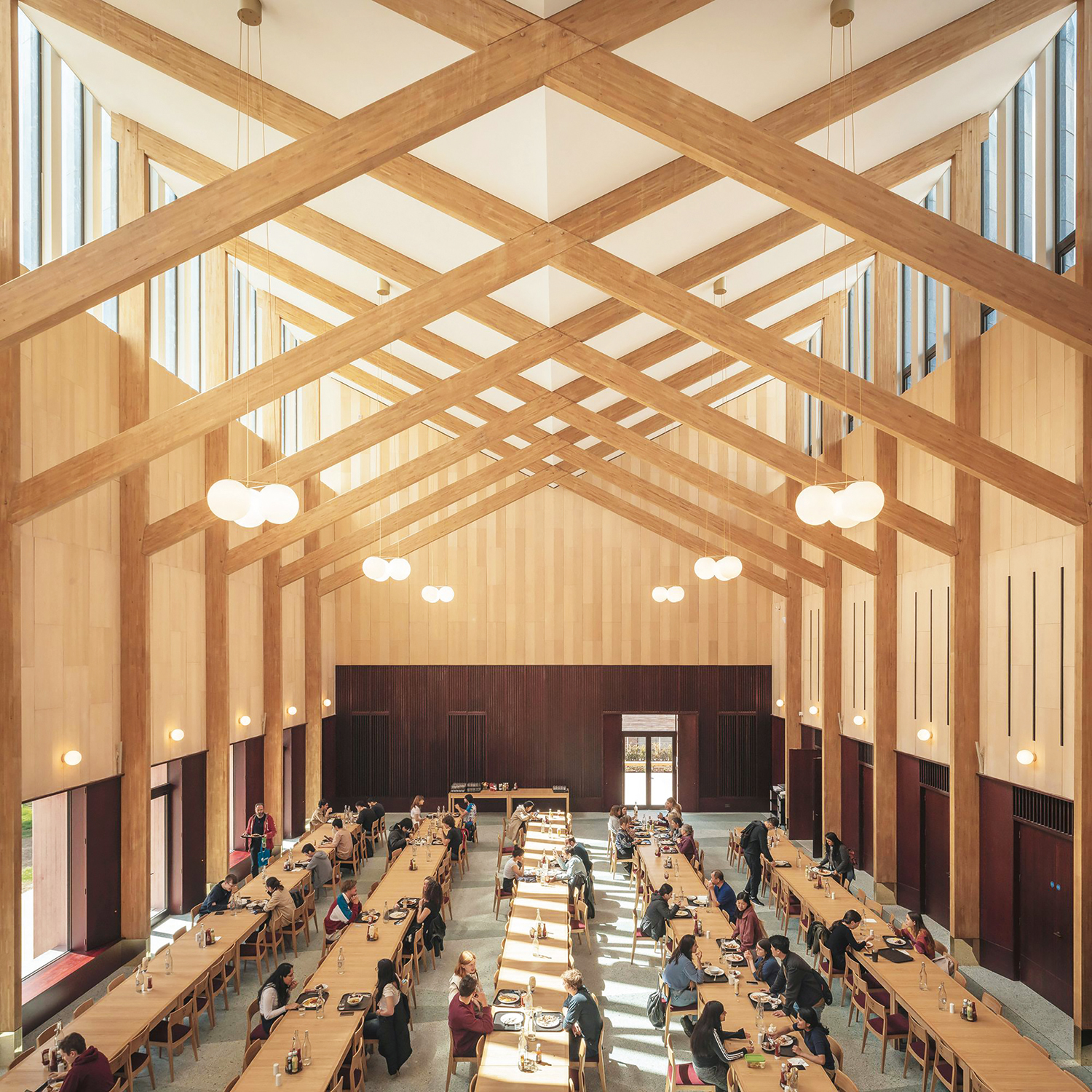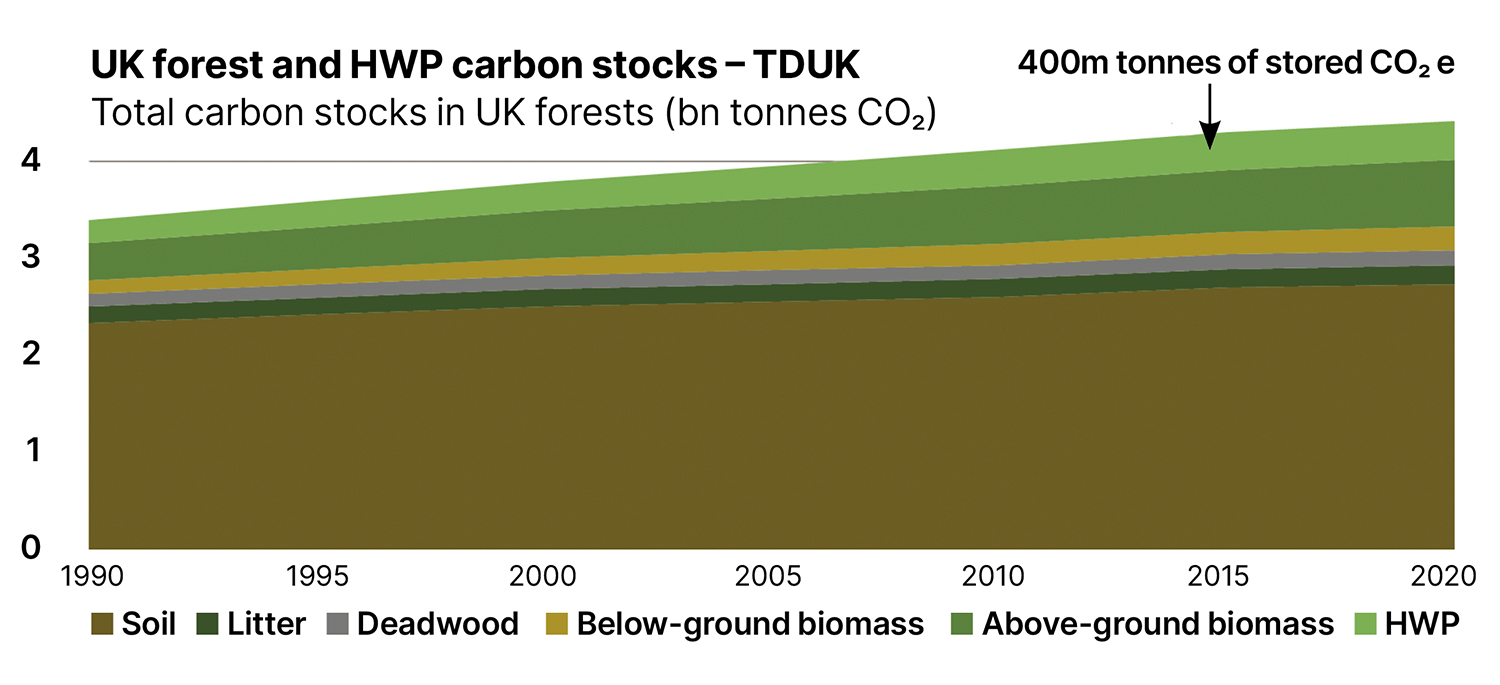
Can timber be used to reduce construction’s overall embodied carbon and, if so, how should the carbon impacts of timber be assessed? This CPD, in association with PEFC UK and Timber Development UK, explains how. By Charlie Law.
We are in a climate emergency, and with buildings and construction responsible for around 43% of global carbon emissions (15.8GtCO2), we must act.
The energy use of buildings accounts for around 28% of global carbon emissions (10GtCO2). These emissions are being significantly reduced through energy efficiency and decarbonisation of the energy grid.
However, carbon emissions from the construction process and manufacture of construction products, known as embodied emissions, are only now being taken seriously – and rightly so, as they amount to around 15% of global carbon emissions (5.8GtCO2). Around 12% of global carbon emissions (4.6GtCO2) are driven by cement, aluminium and steel manufacture for construction alone. So how do we reduce our reliance on these materials?
The UK government has set a target of net zero carbon emissions by 2050, which is now enshrined in legislation. Within the construction industry, many organisations are setting their own net zero by 2050 targets and are calling for embodied carbon targets to be incorporated into the Building Regulations, most notably the Part Z initiative. With this in mind, architects are looking at timber to reduce embodied carbon. So how should we account for timber when carrying out a carbon assessment of a building?
Carbon and timber
To explain this, we first need to go back to basics. Trees remove CO2 from the atmosphere during their growing cycle, storing it as biogenic carbon. For most timber, half the dry mass is biogenic carbon, so for example 1m3 of Swedish spruce contains 200kg of biogenic carbon, having sequestered and stored 733kg of CO2 from the atmosphere.
Biogenic carbon cycle – TDUK

Planting trees, and using the timber in construction, creates a long-term carbon capture and storage (CCS) solution. When the tree is felled and processed into products the biogenic carbon stays locked away in the timber fibres, and remains so when the material is reused or recycled into other products such as chipboard. It is only released either through combustion or decomposition.
We must therefore ensure we keep timber products in use for as long as possible, by adopting circular economy principles and reusing, refurbishing, remanufacturing or recycling at the end of its service life.
Forests and carbon
Although some areas of the world are in a state of deforestation, mainly due to forest clearing for farmland (beef and soya) rather than timber production, in many areas the amount of forest is increasing.
For Europe, from which 88% of UK timber is sourced, an average annual balance of 570MtCO2 has been added to the forest carbon sink each year over the last 10 years, taking into account removals and emissions. In the UK alone it is estimated that over 4GtCO2 is locked away in forests, with 400MtCO2 in harvested wood products (HWP), such as timber in buildings.

Assessing carbon in an EPD
An Environmental Product Declaration (EPD) is a document that records environmental impacts for a construction product, including ozone depletion, acidification and eutrophication potential, as well as the global warming potential, where we assess the CO2e impact.
These must be produced in accordance with recognised standards, eg, BS EN 15804:2012+A2:2019 or ISO 14025:2010. The impacts are assessed at various stages within the product system. There are five key stages:
- A1-A3 product stage
- A4-A5 construction stage
- B1-B5 use stage
- B6-B7 operational carbon stage
- C1-C4 end-of-life stage.
There is also a stage D, which assesses the end-of-life scenario, but these figures are not included in the overall global warming potential calculation. BS EN 15804:2012+A2:2019 requires modules A1-A3, C1-C4 and D to be assessed as a minimum.
The most important question to ask when assessing a timber product is the source. If the timber is from a sustainably managed forest, then the biogenic carbon sequestration should be considered as part of the assessment.

The easiest way to confirm your timber is sustainably sourced is to ensure it comes with a full chain of custody from a recognised forest certification schemes, such as the Programme for the Endorsement of Forest Certification (PEFC), the Forest Stewardship Council (FSC) or Grown in Britain (GiB).
In the case of verified, sustainably sourced timber, the sequestered carbon is considered to enter the system when it is harvested and is reported as a negative figure within module A1 of the EPD (raw material extraction) under the biogenic carbon heading. The sequestered carbon is then deemed to exit the system within module C3 or C4, depending on the end-of-life scenario.
As the end-of-life scenario is not usually set by the manufacturer, an EPD will normally state figures for different scenarios, such as reuse, recycling, incineration and landfill.
For reuse, recycling and incineration, the sequestered carbon is deemed to be passed on to the next product system, and a positive figure is entered under the biogenic carbon heading in module C3 (eg, if timber is recycled into chipboard, the biogenic carbon benefit is passed to the new chipboard product system and can be deducted in module A1).
For the landfill scenario, the sequestered carbon is deemed to transfer to nature, and a positive figure is entered under the biogenic carbon heading within module C4.
Alongside the biogenic carbon data, the EPD includes CO2e impacts from fossil fuels, land use and land transformation, in the global warming potential section. This will show a net positive figure for the product’s carbon impact over all modules.
Whole life carbon assessment – TDUK

However, compared to other building materials, whole life carbon impacts of timber are much lower. According to an EPD from Stora Enso, for example, cross-laminated timber (CLT) manufactured from spruce and pine, the whole life carbon impact is only 116kg CO2e/m3 (recycled at end of life). This is far less than an equivalent steel and/or concrete element to support the same loads.
Assessment of carbon in buildings
When assessing the carbon impacts of a building, these must also be produced in accordance with a recognised standard, eg, BS EN 15978:2011. The calculation should use the data included within the EPD for a product wherever possible. Definitions must be understood to ensure the right information is included:
Embodied carbon: CO2e emissions associated with the material, construction, maintenance and demolition processes throughout the whole life cycle of an asset (modules A1-A5, B1-B5, C1-C4).
Operational carbon: CO2e emissions arising from energy and water consumed by an asset in use, as projected or measured, over its life cycle (modules B6-B7).
Upfront carbon: CO2e emissions associated with materials and construction processes up to practical completion (so product manufacture, transport and construction) (modules A1-A5).
Whole life carbon: Sum total of all asset-related CO2e emissions, both operational and embodied over the life cycle of an asset including its disposal. Whole life carbon = operational carbon + embodied carbon (modules A1-A5, B1-B7, C1-C4). The potential benefit from future energy recovery, reuse and recycling (module D) is reported separately.
A whole life carbon assessment is the preferred option, and this is the approach being championed by the Part Z initiative, the RIBA 2030 Climate Challenge Guide and the Low Energy Transformation Initiative (LETI). However, the RICS professional statement on whole life carbon assessment of the built environment recognises that the information needed is not always available from EPDs, so allows an upfront carbon assessment as an alternative.
Further reading
For more information on assessing carbon impacts of timber in construction, see the Timber Development UK technical paper Assessing the carbon-related impacts and benefits of timber in construction products and buildings
For more information on timber circular economy principles, see the previous CPD on Timber and the Circular Economy (Construction Management November/December 2021) produced in association with PEFC UK
Timber Development UK: www.timberdevelopment.uk
PEFC UK: www.pefc.co.uk
Sustainable Construction Solutions: www.susconsol.co.uk
In a whole life carbon assessment or embodied carbon assessment of a building, where the timber is from a sustainably managed forest, then the biogenic carbon sequestered should be considered as part of the assessment. However, if only an upfront carbon assessment is undertaken (ie, only modules A1-A5), then the biogenic carbon sequestered in the installed timber products must not be included in the result, but be stated as a separate ‘stored carbon’ figure in the report.
Timber components inherently have a lower embodied carbon impact. Therefore, designers should incorporate timber in place of higher embodied carbon materials wherever possible. To ensure the carbon remains locked in the timber for as long as possible, circular economy principles should ensure timber components are designed for reuse wherever practicable.
Net zero carbon roadmap
Although timber is a low embodied carbon material, we can see from the EPDs for timber products that there is still an amount of embodied carbon within them. Therefore in 2022, the industry body Timber Development UK set out its intentions to be net zero by 2050.
It subsequently embarked on a net zero carbon roadmap project that brought together the timber supply chain to establish a route to net zero by 2050. This roadmap, published in January 2023, highlights key areas where the timber industry can make a difference, including:
- Improving efficiency of production and distribution of materials immediately;
- Moving to electric-powered vehicles for transportation of products and hydrogen for harvesting as the technology becomes available;
- Moving over to biomass CHP, and other renewable energy forms, during production;
- Working with the overseas supply chain to reduce imported embodied emissions.
By working together, the timber industry can assist the UK construction industry in meeting its 2050 net zero targets, and ensure it plays a key part in reducing global CO2e emissions.
Charlie Law is sustainability director at Timber Development UK and founder and managing director at Sustainable Construction Solutions.




